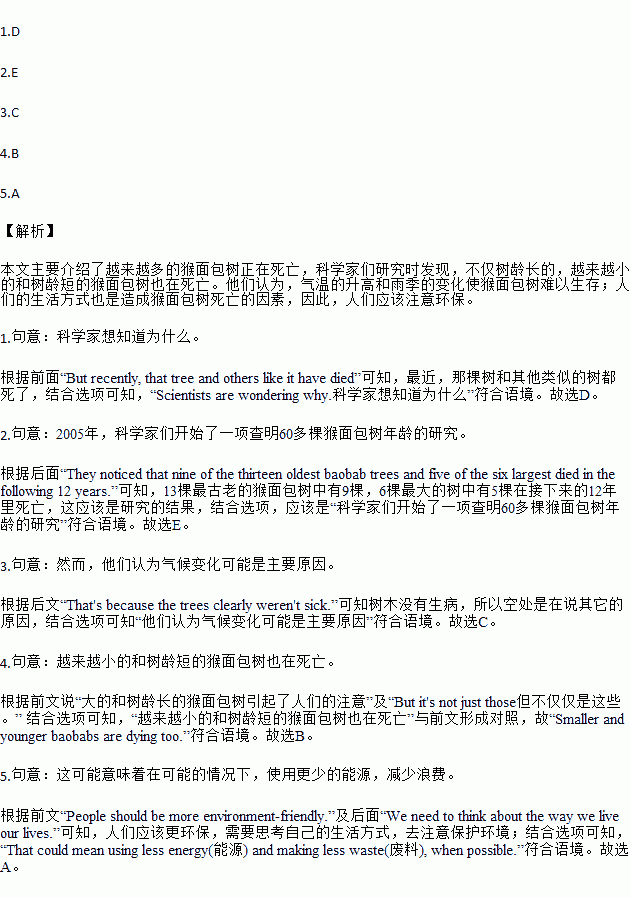题目内容
There was once a very wide tree in South Africa. 60 people could stand in its hollow trunk(空心树干). The tree reached over 18 meters into the sky and it was more than 1, 100 years old. But recently, that tree and others like it have died.1.
The tree was a baobab(猴面包树). Baobab trees grow in Africa and are called"the Tree of Life”.
Baobab trees usually live a long time. One of the oldest stood for more than 2, 400 years.
2.They noticed that nine of the thirteen oldest baobab trees and five of the six largest died in the following 12 years.
Stephan Woodborne, one of the six scientists, says more research(研究)is needed to know why the trees died.3.That's because the trees clearly weren't sick. Besides, many were in national parks, so they were protected from human activities. They believe that increasing temperatures and changing rainy seasons have made it harder for baobabs to live.
"The big ones and the old ones caught the attention of people, Woodborne says. "But it's not just those. 4.People should be more environment-friendly. It is one way to help protect baobabs and other trees from the effects of climate change, according to Woodborne. 5.
“We need to think about the way we live our lives. "Woodborne says. "If we all change what we do a little bit, it will start to make a difference.”
A.That could mean using less energy(能源) and making less waste(废料), when possible.
B.Smaller and younger baobabs are dying too.
C.However, they think climate change may be the main reason.
D.Scientists are wondering why.
E.In 2005, scientists began a research to find out the age of more than 60 baobabs.
 智趣寒假作业云南科技出版社系列答案
智趣寒假作业云南科技出版社系列答案

 B.
B.
 D.
D.